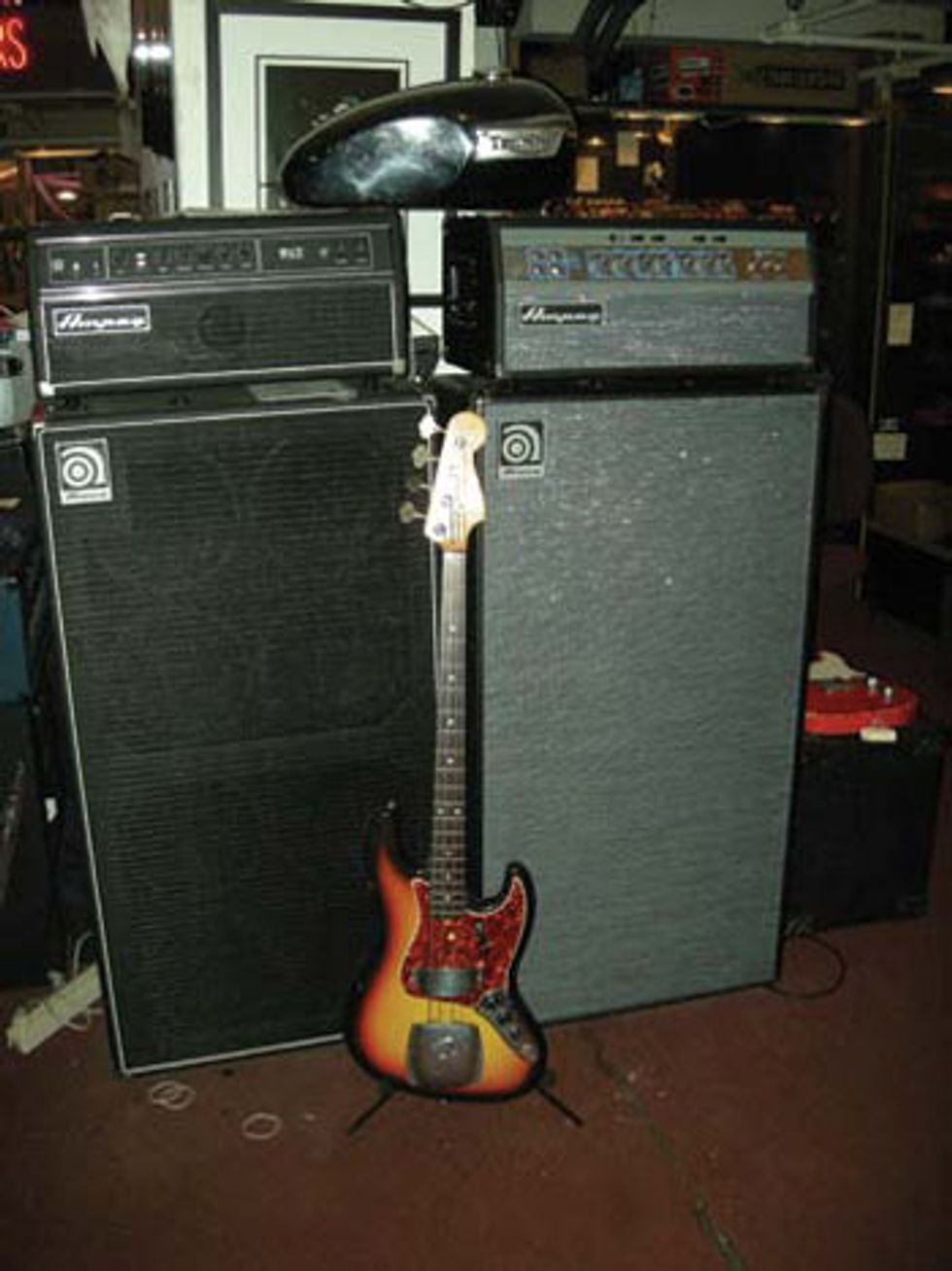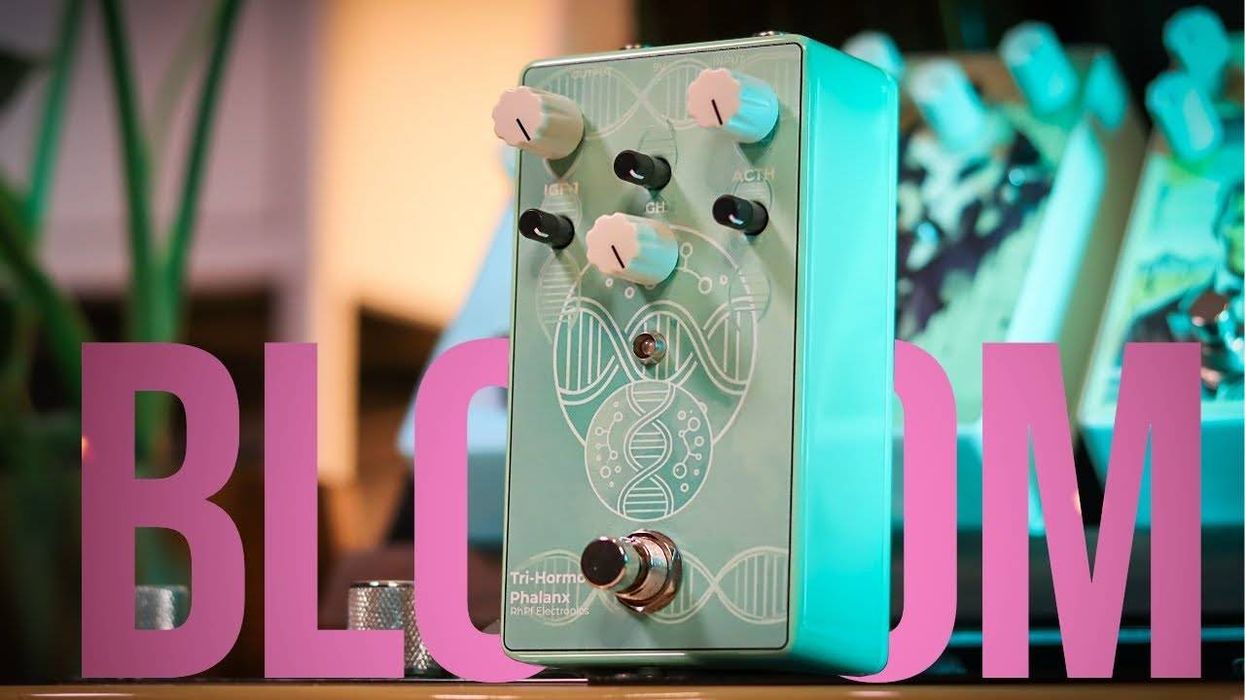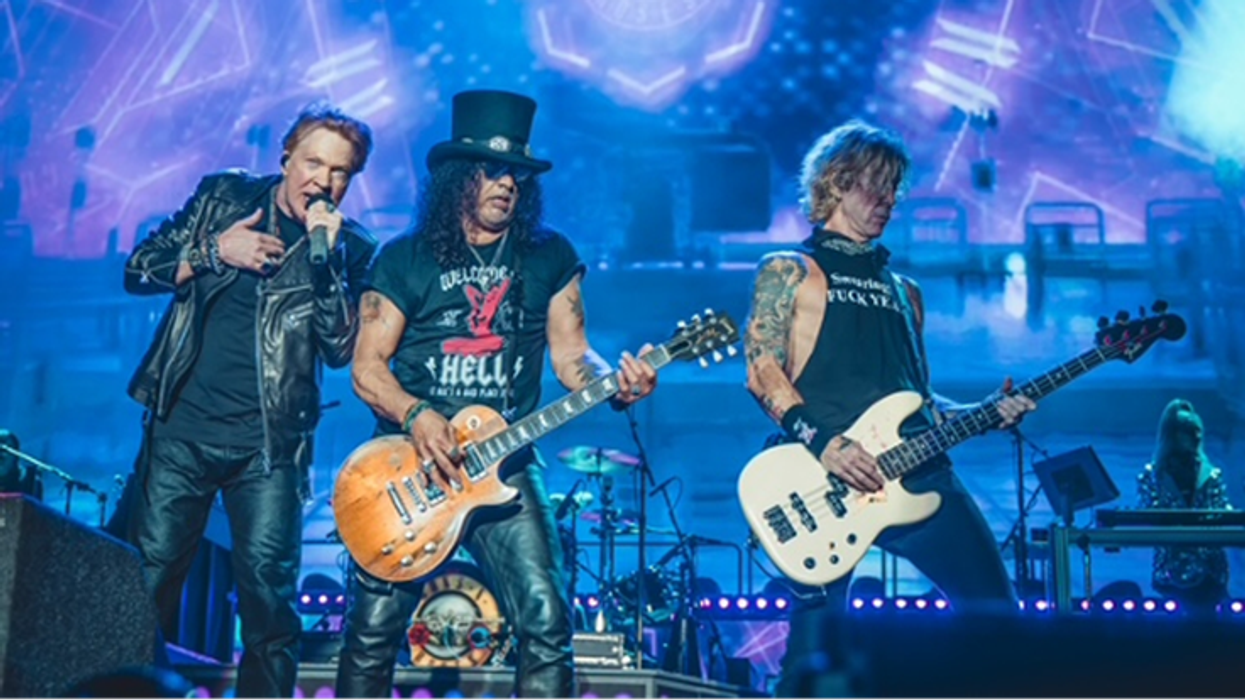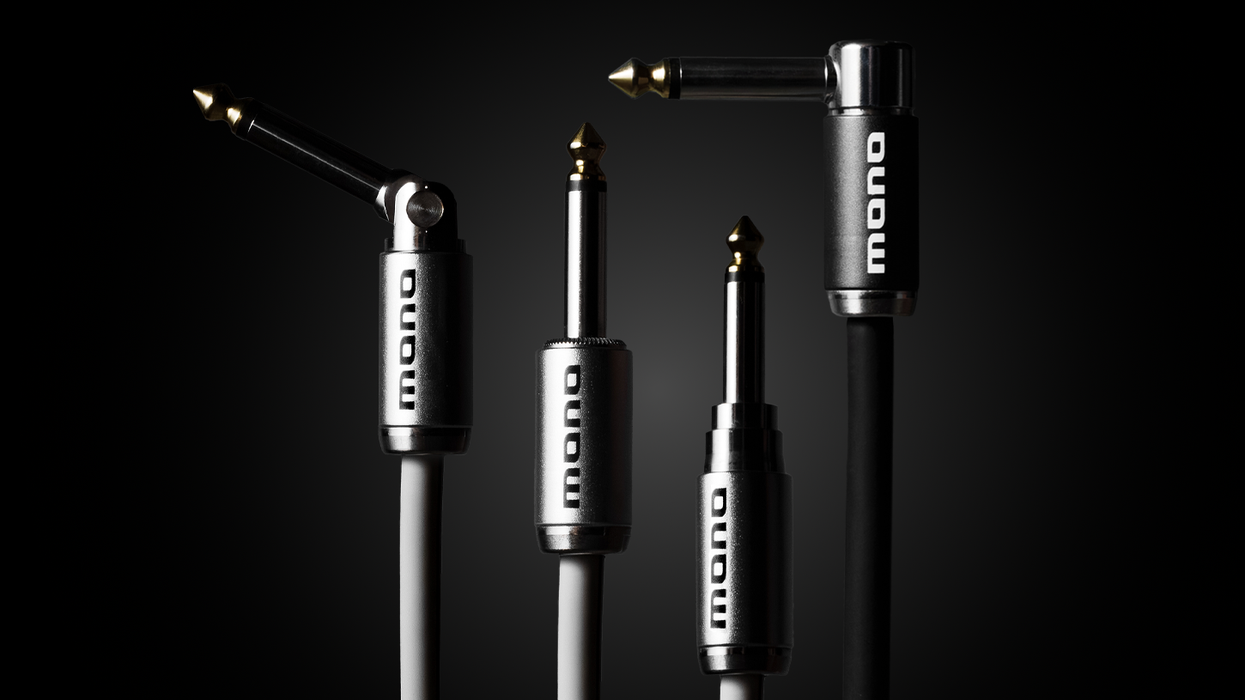Last month we were talking about the early stuff. By today’s standards this technology is Stone Age, but I will say this—more records, jingles and soundtracks were (and are) recorded with this gear than any other gear. In this instance new technology does not always mean better. New gear is more reliable, but I still have not found a better sounding amp then a “blue check” B-15. In the late 1960s there were major strides in amp technology in terms of volume, reliability and size. Let’s look at the options.
The SVT Era
An absolutely appalling use of technology took place in the late ‘60s involving bass amplification. The same invention that helped put a man on the moon helped make some of the worst amps ever: the transistor. The late-‘60s transistor amps were hands down some of the worst sounding, most unreliable amps ever made. Fender made a short-lived transistor amp in the late ‘60s, as did VOX, Marshall and everyone else. If the amp did not short out or burn to the chassis, it created an overwhelming urge to put knitting needles through you ear drums to stop the tonal torture. From ten feet away, the Fender and Vox amps looked like the tube amps those companies were known for. The Marshall (I have not seen one in 20 years, thank the lord) looks like a longer Acoustic 370 head, but it’s dressed like a Marshall. Most of Marshall’s torture devices were stripped for their logos, knobs and switches. The carcasses are used as doorstops. For the collection or static display of gear that sucks, these amps are fine.
This is the BIG stuff!
On the other hand, some of the most amazing high-volume, reliable, “tone of the gods” amplifiers came out of this era. Ampeg produced the most robust product line. Marshall had the Major and Super Bass. Acoustic had the 360 and 370 series and the short-lived 320/408 rig, and Sunn had the Coliseum, Concert Bass and Model T. Fender had the old standby, the Bassman line. I’d say 95 percent of gigging bass players used the above-mentioned gear from these manufacturers.
Marshall
Years ago I played a large gig. My rig was two Plexi Marshall Majors and four huge 4x15 cabinets that I throttled my beloved 1964 Tbird IV through. The band played all originals, except for one cover, “I Don’t Need No Doctor” from Humble Pie. This rig nailed the bass tone from the Fillmore album. It’s not that tight modern sound but that vicious old-school wall of volume and tone. Most mortals need to experience this at least once. This rig will produce the Jack Bruce, Noel Redding and Overend Watts tone. For club work, you would be amazed how well a Major or Super Bass performs at a reasonable volume.
There is one very serious drawback to owning an old Marshall. The Major runs on KT88s. I have found the newer KT88s just don’t sound as good as the real Mullards. The Asian KT88s blow like mad in these amps. Have you priced a set of NOS Mullards? A quartet is between $800 and $1200 or more!
Ampeg
As a young teen, I went to a KISS concert at Madison Square Garden. The opening band, Detective, had SVTs on stage. I was in awe watching their bass player. A few weeks later, I saw a local band where the bassist had a Fireglo 4001 going through a full SVT rig. Not a bass, but an amp influenced me as a player. The best way to describe these amps is pure balls, pure tone and lots of volume. An old SVT will do a formidable job with an active bass and even a 5-banger. It is one of the few vintage amps that can. In a stage situation, this maybe the ultimate amp for a vintage bass. The Ampeg line also included the V-4B, B-25 and B-15. Each head had a specifically matched cabinet. The V-4B was almost like the SVT’s little brother, where the B-25, rather then being the underling to the V-4B, was the big brother to the B-15. Ampeg also made a solid-state line and quite frankly these were not to my palette.
My thoughts—I love this amplification. Using a passive bass and one of these amps is the only way to achieve real old-school tone. There is nothing like having an SVT or a Marshall rig behind you. These days I rarely use them. My 47-year-old bad back and lack of desire to drive my wife’s minivan to a gig are the reasons. If I drive the van, it means I’m lugging the PA system, too. Quite a few of the amps I’ve discussed can be purchased at very reasonable prices. SVT heads and vintage Marshall gear remain quite expensive.
The Low Down Wrap Up
4 SVT heads—$7000; 4 SVT cabinets—$ 3500. The looks of terror from the soundman and the guy in the front row directly in front of you? Priceless! Next month we will continue through the SVT era and on to the modern era. Until next time, drop the gig bag, bring the cannolis!
Kevin Borden
Kevin Borden has been a bass player since 1975 and is currently the principle and co-owner, with “Dr.” Ben Sopranzetti, of Kebo’s Bass Works: kebosbassworks.com. He can be reached at: Kebobass@yahoo.com. Feel free to call him KeBo.





![Rig Rundown: AFI [2025]](https://www.premierguitar.com/media-library/youtube.jpg?id=62064741&width=1245&height=700&quality=70&coordinates=0%2C0%2C0%2C0)












 Shop Scott's Rig
Shop Scott's Rig















































